Related Research Articles

Spelman College is a private,historically Black,women's liberal arts college in Atlanta,Georgia. It is a founding member of the Atlanta University Center academic consortium. Founded in 1881 as the Atlanta Baptist Female Seminary,Spelman awarded its first college degrees in 1901 and is the oldest private historically Black liberal arts institution for women.

Bennett College is a private historically black liberal arts college for women in Greensboro,North Carolina. It was founded in 1873 as a normal school to educate freedmen and train both men and women as teachers. Originally coed,in 1926 it became a four-year women's college. It is one of two historically black colleges that enroll only women,the other being Spelman College.
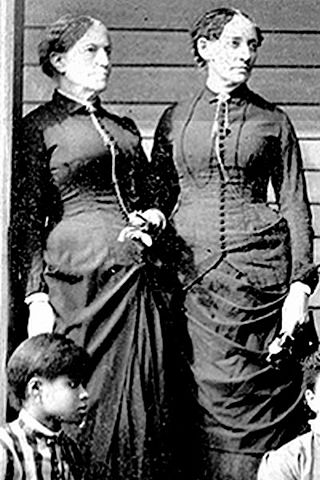
Sophia B. Packard was an American educator,cofounder in Atlanta,Georgia,of a school for African American women that would eventually become Spelman College.

Lucy Wheelock was an American early childhood education pioneer within the American kindergarten movement. She began her career by teaching the kindergarten program at Chauncy-Hall School (1879–89). Wheelock was the founder and head of Wheelock Kindergarten Training School,which later became Wheelock College in Boston,Massachusetts,and is now the namesake of Boston University's college of education BU Wheelock. She wrote,lectured,and translated on subjects related to education.
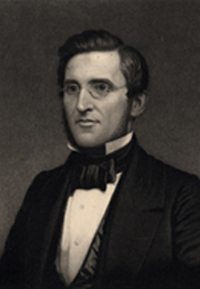
Joseph Cummings was an American academic who served as the 5th president of Wesleyan University from 1857 to 1875,the 5th president of Northwestern University from 1881 to 1890,and the president of Genesee College from 1854 to 1857.
Tapley is a surname. Notable people with the surname include:

The history of the University of Florida is firmly tied to the history of public education in the state of Florida. The University of Florida originated as several distinct institutions that were consolidated to create a single state-supported university by the Buckman Act of 1905. The oldest of these was the East Florida Seminary,one of two seminaries of higher learning established by the Florida Legislature. The East Florida Seminary opened in Ocala 1853,becoming the first state-supported institution of higher learning in the state of Florida. As it is the oldest of the modern University of Florida's predecessor institutions,the school traces its founding date to that year. The East Florida Seminary closed its Ocala campus at the outbreak of the American Civil War and reopened in Gainesville in 1866.

Shimer College was founded in 1852,when the pioneer town of Mt. Carroll,Illinois,lacking a public school,incorporated the Mt. Carroll Seminary with no land,no teachers,and no money for this purpose.
The Mount Carroll Seminary was the name of Shimer College from 1853 to 1896. The Seminary was located in Mount Carroll,Illinois,in the United States. A pioneering institution in its time and place,the Mount Carroll Seminary served as a center of culture and education in 19th-century northwestern Illinois. Despite frequent prognostications of failure,it grew from 11 students in a single room to more than 100 students on a spacious campus with four principal buildings. Unusually for the time,the school was governed entirely by women,most notably the founder Frances Wood Shimer,who was the chief administrator throughout the Seminary's entire existence.
DeForest Henry Perkins was an American educator,real estate developer,and political activist who was the Grand Dragon of the Ku Klux Klan in Maine from 1925 to 1928. Perkins served as Superintendent of Portland Public Schools from 1911 –1918. He was then hired as secretary of the Portland Chamber of Commerce from 1918 –1921. During his time as Grand Dragon,the Klan experienced both its peak in political strength before dramatically declining. of the Klan's ascendency nationally,and in Maine. He resigned in 1928 after a Klan-backed Republican candidate for U.S. Senator,Ralph Owen Brewster,lost his primary contest to Sen. Frederick Hale,signaling the eclipse of the Klan as a force in Maine politics.
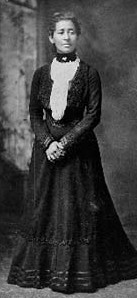
Selena Sloan Butler (1872–1964) was the founder and first president of the National Congress of Colored Parents and Teachers Association (NCCPT). President Herbert Hoover appointed her to the White House Conference on Child Health and Protection in 1929. During World War II,she organized the Red Cross' first black women's chapter of "Gray Ladies." When Congress merged the NCCPT with the National PTA in 1970,Butler was posthumously recognized as one of the organization's founders. Today,Butler is considered a co-founder of the National Parent-Teacher Association.
Hale is a surname. Lords of Loddon-Hales,Hale or "De Halys" trace back to Lord Roger De Halys circa 1130;his descendant Lord Roger De Halys married Alice Scrogins circa 1275,and their daughter Alice Hale married Thomas of Brotherton,1st Earl of Norfolk,the son of Edward I of England. Those who were the ancestors of William Hale who married Rose Bond of Kingswaldenbury,their grandson George Hale came to America on the ship "Supply" in 1620,where he lived with the governor Sir Francis Wyatt of Virginia. Other Hale descendants also use the noble title Earl of Tenterden,Viscount of Tinsdall and the Baronets Of Beakesbourne and Coventry. Many Armorial achievements have also been used by Hale descendants. It is said that the Hales were related to Saint Edmund,King of East Anglia in which the Hales get their Arrows pointing downward in their coat of arms.

Milwaukee College began as the Milwaukee Female Seminary founded by Lucy A. Parsons,of Le Roy Female Institute. She was the wife of Rev. W. L. Parsons,pastor of Milwaukee's Free Congregational church. The school opened on September 14,1848,in a house in downtown Milwaukee. Two years later,Catharine Beecher and her associate Mary Mortimer,who had worked with Lucy at Le Roy Female Institute,became connected with the Seminary. Beecher,a reformer and eldest sister of Harriet Beecher Stowe,had designed "The Beecher Plan" for educating women through the college level for professions. She was invited to launch her plan in Milwaukee and came there first in April,1850. "The Beecher Plan" focused on four professions most open to women:teaching,child care,nursing,and "conservation of the domestic state". The school was incorporated in March 1851,as the Milwaukee Normal Institute and High School,and moved to new quarters. In 1852,through the influence of Beecher,US$17,894 was received from her friends in the East and the American Woman's Educational Association;Milwaukeeans raised another $13,540;and a permanent home for the school was commissioned on the corner of Juneau Avenue and Milwaukee Street. The school opened there in the fall of 1852,though the building was not yet finished. By act of the legislature the name was changed in April 1853,to Milwaukee Female College. In March 1876,the name was changed to Milwaukee College. In July 1895,Milwaukee College and Downer College merged to become Milwaukee-Downer College.

The history of Bates College began shortly before Bates College's founding on March 16,1855,in Lewiston,Maine. The college was founded by Oren Burbank Cheney and Benjamin Bates. Originating as a Free Will Baptist institution,it has since secularized and established a liberal arts curriculum. After the mysterious 1853 burning of Parsonsfield Seminary,Cheney wanted to create another seminary in a more central part of Maine:Lewiston,a then-booming industrial economy. He met with religious and political leaders in Topsham,to discuss the formation of such a school,recruiting much of the college's first trustees,most notably Ebenezer Knowlton. After a well-received speech by Cheney,the group successfully petitioned the Maine State Legislature to establish the Maine State Seminary. At its founding it was the first coeducational college in New England. Soon after it was established,donors stepped forward to finance the seminary,developing the school in an affluent residential district of Lewiston. The college struggled to finance its operations after the financial crisis of 1857,requiring extra capital to remain afloat. Cheney's political activities attracted Benjamin Bates,who was interested in fostering his business interests in Maine. Bates donated installments of tens of thousands of dollars to the college to bring it out of the crisis.
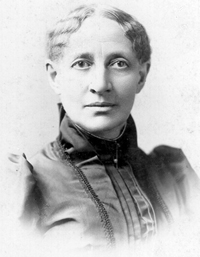
Harriet Elizabeth "Hattie" Giles was an American educator,cofounder in Atlanta,Georgia,of a school for African American women that would eventually become Spelman College.
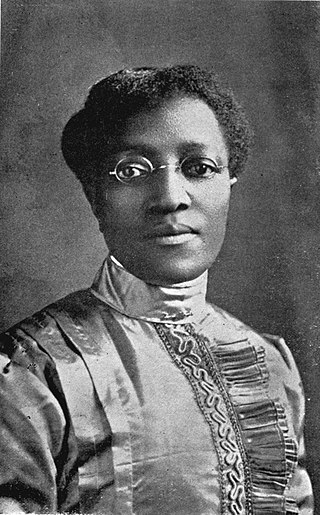
Clara Ann Howard was an American educator and,from 1890 to 1895,a Baptist missionary in Africa.
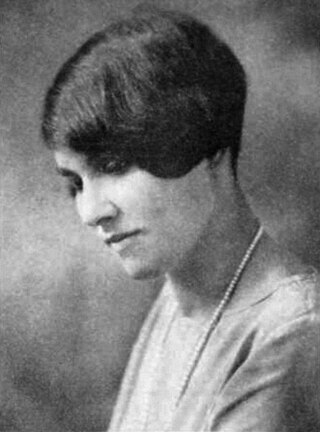
Ethel Elizabeth McGhee Davis was an American educator,social worker,and college administrator. She served as the student adviser (1928–1931) and as the Dean of Women (1931–1932) for Spelman College in Atlanta.

Marion Coats Graves was an American educator known for her work in creating two-year junior colleges for women. She helped establish and was the first president of Sarah Lawrence College.
Haygood Seminary,also known as Haygood Academy,was a seminary near Washington,Arkansas,United States. It was established by the Colored Methodist Episcopal Church to train African Americans in Arkansas for a career in the clergy. It was one of the first such institutions established by the CME Church. In 1927,the school relocated to Jefferson County,Arkansas,where it operated as Arkansas-Haygood Industrial College before closing during World War II.

The Woman's American Baptist Home Mission Society was an American Christian women's missionary organization. Harriet E. Giles and Sophia B. Packard co-founded,in 1877,the Woman's American Baptist Home Mission Society,supporting missionary women bringing education to the African-American and Native American communities.
References
- 1 2 3 4 5 6 7 8 Fuller, Steve (2023-10-23). "Madam President: Brooksville-born Lucy Hale Tapley's 'Uncommon Story' to be discussed Nov. 1". The Ellsworth American. Retrieved 2024-02-05.
- 1 2 3 4 "Lucy Hale Tapley - Spelman College". www.spelman.edu. Retrieved 2024-02-05.
- 1 2 3 4 Watson, Yolanda; Gregory, Sheila (2005). "New Directions: Toward Collegiate Status: The Lucy Hale Tapley Administration (1910-1927)". Daring to Educate. Routledge. ISBN 9781579221096.